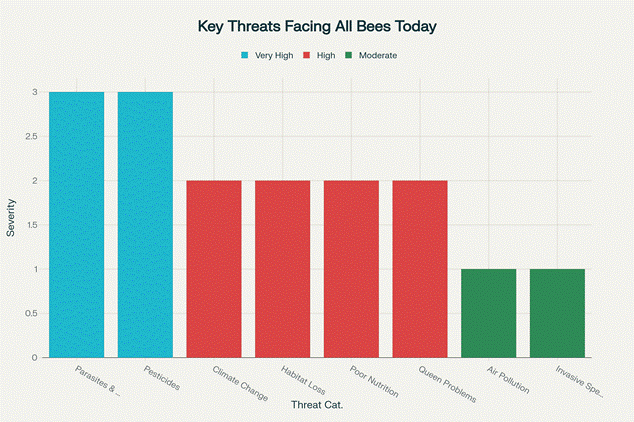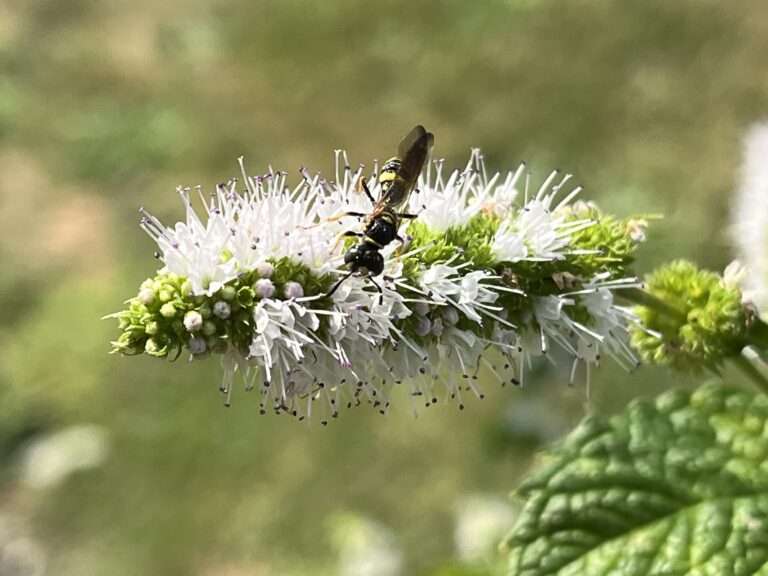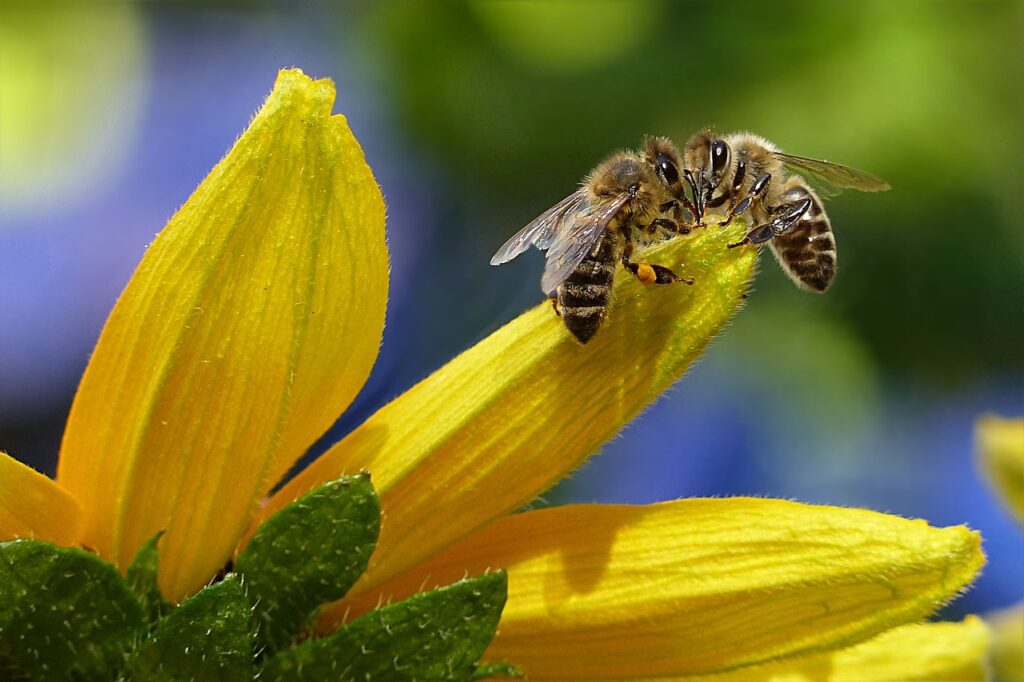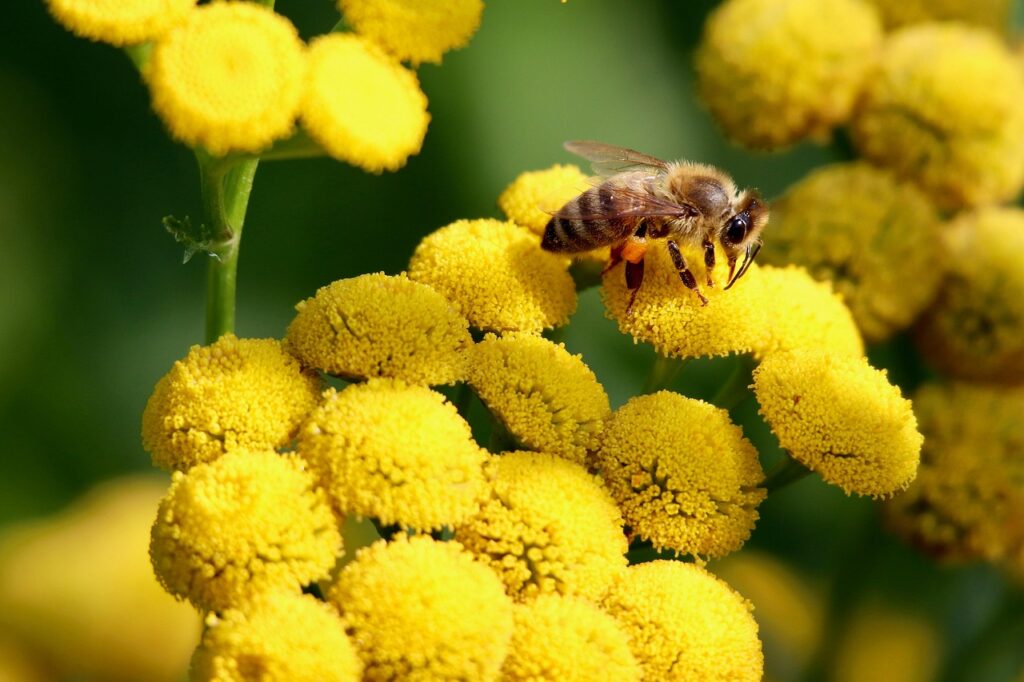Discover the main threats facing honeybees & wild bee populations
Bee populations worldwide are facing unprecedented challenges that threaten both managed honey bee colonies and wild bee species. Recent data shows that U.S. commercial beekeepers reported the highest honey bee colony losses ever recorded in 2025, with over 62% of commercial operations losing their colonies[1][2]. Meanwhile, native bee species are experiencing equally alarming declines, with nearly 1 in 4 North American native bee species at risk of extinction[3].

Key threats facing all bee species today, showing the relative severity of different threat categories affecting both honey bees and wild bees.
Primary Threats to Bee Populations
Parasites and Diseases – The Most Critical Threat
Varroa destructor mites represent the greatest single threat to honey bee health globally[4][5]. These parasitic mites feed on bee hemolymph and vector numerous viruses, causing both direct damage and immune system suppression[6][7]. Recent USDA findings identified high levels of Deformed Wing Virus strains A and B along with Acute Bee Paralysis Virus in collapsed colonies, with all sampled mites carrying genes associated with resistance to amitraz, a critical miticide[1].
For wild bees, disease transmission from managed honey bees poses a significant threat. Research demonstrates that deformed wing virus and Nosema ceranae can spread from honey bees to bumble bees, with honey bees acting as disease reservoirs for wild pollinator communities[8]. This pathogen spillover represents an emerging conservation concern as managed bee densities increase.
Pesticides – Widespread Chemical Exposure
Neonicotinoid pesticides have emerged as a key catalyst in bee declines due to their systemic nature and widespread use[9][10]. These chemicals are absorbed throughout plant tissues, including pollen and nectar, exposing bees to sublethal doses that cause:
- Compromised immune response
- Shortened adult life cycles
- Impaired memory and learning
- Reduced foraging efficiency
- Disorientation and navigation problems[9]
Wild bees face particular vulnerability to pesticides as they lack the protection measures available to managed colonies. Recent research covering over 1,000 wild bee species found that neonicotinoid and pyrethroid use contributes to a 43.3% decrease in the probability that species occur at a site[11][12].
Climate Change – Disrupting Natural Cycles
Climate change affects bees through multiple pathways. Warmer autumns and winters extend honey bee flight times, altering the age structure of overwintering clusters and leading to greater risks of spring colony failure[13]. For wild bees, approximately 65% of species are projected to experience distribution range reductions by 2070, with particularly severe impacts expected in Africa and Europe[14].
Temperature extremes also disrupt the synchrony between flowering plants and their pollinators, causing nutritional stress when bees emerge but food sources are not yet available[15].
Habitat Loss and Fragmentation
Agricultural intensification represents the primary driver of bee habitat destruction[16][3]. Natural bee habitats like grasslands and prairies are being converted to monoculture crops, eliminating the diverse floral resources bees need throughout their life cycles[16][17].
Wild bees are particularly vulnerable as many species are habitat specialists requiring specific nesting sites and native plants. Approximately 70% of wild bee species nest in the ground and need undisturbed soil areas[18][19]. The loss of these specialized habitats affects both foraging opportunities and reproduction success.
Nutritional Deficiencies
Poor nutrition weakens bee colonies and makes them more susceptible to other stressors[20][21]. Honey bees suffer when confined to monoculture landscapes that lack floral diversity, leading to deficiencies in essential nutrients like omega-3 fatty acids and specific sterols[22][23].
Wild bees face even greater nutritional challenges as they often specialize in specific plant species. The decline of native plant communities directly impacts these specialist pollinators, creating cascading effects throughout ecosystems[24].
Differences Between Honey Bee and Wild Bee Threats
| Threat Category | Honey Bees | Wild Bees |
| Varroa Mites | Severe impact – primary cause of colony losses[4] | Minimal impact – different host species[6] |
| Pesticide Exposure | High exposure but some protection measures available[10] | Very high vulnerability with no protection[11][12] |
| Habitat Requirements | Moderate impact – managed placement flexibility[25] | Severe impact – habitat specialists requiring specific sites[3][18] |
| Disease Transmission | High viral loads, especially when mite-vectored[1][8] | High risk from pathogen spillover from managed bees[8] |
| Competition | Low – managed colonies with dedicated resources | High – outcompeted by honey bees for floral resources[26][27] |
| Conservation Status | Populations managed but experiencing high losses[2][28] | 24% of species imperiled, many declining[3][29] |
Air Pollution – An Emerging Threat
Recent research reveals that air pollution significantly impacts bee health and foraging success. Ozone and other pollutants degrade floral scent plumes, reducing bees’ ability to locate flowers by up to 90%[30][31]. PM2.5 particles affect skylight polarization patterns that bees use for navigation, resulting in longer foraging trips and reduced efficiency[32][33].
Studies using machine learning models across Canada and the USA found that increased ozone concentration and poor air quality significantly increased honey bee mortality probability[32].
Queen Problems and Colony Management Issues
Honey bee queens are experiencing increasing failure rates, with many surviving less than two years compared to the historical 3-6 years[34][35]. Contributing factors include:
- Chemical treatment effects on drone sperm viability
- Poor mating conditions due to weather extremes
- Genetic bottlenecks in commercial breeding programs
- Increased supersedure events throughout the year[34]
For wild bees, queen issues vary by species, with solitary bees operating under entirely different reproductive strategies where each female functions as her own queen[18][19].
Conservation Implications
The threats facing bees have far-reaching consequences beyond pollination services. Wild bees provide over $3 billion in fruit pollination services annually in the United States alone[3], while managed honey bees contribute $15 billion in agricultural productivity[36]. The combined economic value of pollination services reaches $200 billion globally[36].
The decline of both managed and wild bee populations threatens food security, ecosystem stability, and biodiversity conservation. Immediate action is needed to address multiple stressors simultaneously, including habitat restoration, pesticide reduction, climate adaptation strategies, and improved disease management protocols.
Protecting bee populations requires recognizing that honey bees and wild bees face overlapping but distinct challenges. While honey bees benefit from active management, wild bees need habitat conservation and protection from the indirect effects of agricultural intensification. Both groups are essential components of healthy ecosystems and sustainable agriculture systems.
⁂
- https://beehealthcollective.org/resources/etf
- https://pmc.ncbi.nlm.nih.gov/articles/PMC7712510/
- https://canr.udel.edu/maarec/colony-collapse-disorder/
- https://honeybeehealthcoalition.org/new-data-confirm-catastrophic-honey-bee-colony-losses-underscoring-urgent-need-for-action/
- https://extension.usu.edu/planthealth/research/factors-contributing-to-bee-decline
- https://npic.orst.edu/envir/ccd.html
- https://piedmontmastergardeners.org/article/a-bee-die-off-in-february-2025/
- https://www.panna.org/resources/bees-in-crisis/
- https://www.invasivespeciesinfo.gov/subject/colony-collapse-disorder
- https://www.forbes.com/sites/dianneplummer/2025/05/19/world-bee-day-2025-bees-are-the-unsung-heroes-of-sustainability/
- https://extension.usu.edu/planthealth/factsheets/factors-contributing-to-bee-decline-PR.pdf
- https://en.wikipedia.org/wiki/Colony_collapse_disorder
- https://cals.ncsu.edu/news/deciphering-all-the-buzz-about-honey-bee-loss/
- https://www.psu.edu/impact/story/protecting-pollinators/
- https://agresearchmag.ars.usda.gov/2012/jul/colony
- https://www.nytimes.com/2025/04/12/business/honeybees-colony-collapse.html
- https://www.epa.gov/pollinator-protection/colony-collapse-disorder
- https://www.avma.org/news/mass-honey-bee-collapse-may-compromise-us-agriculture
- https://subjecttoclimate.org/news/report-2025-going-to-be-tough-on-honey-bees
- https://www.osu.edu/impact/research-and-innovation/bee-population
- https://beeaware.org.au/archive-pest/varroa-mites/
- https://abcbirds.org/news/neonic-impacts-on-pollinators-study/
- https://pmc.ncbi.nlm.nih.gov/articles/PMC10889774/
- https://pubmed.ncbi.nlm.nih.gov/32456963/
- https://www.nature.com/articles/s41893-024-01413-8
- https://www.nature.com/articles/s41598-024-55327-8
- https://www.perfectbee.com/a-healthy-beehive/threats-to-bees/best-practices-to-reduce-the-threat-of-varroa
- https://www.centerforfoodsafety.org/issues/304/pollinator-protection/bee-decline-and-pesticide-use-248
- https://tellus.ars.usda.gov/stories/articles/bolstering-bees-changing-climate
- https://www.epa.gov/pesticides/epa-proposes-register-new-pesticide-varroa-mite-control
- https://www.nsf.gov/news/pesticides-affect-health-wild-bees-important-plant
- https://www.ucdavis.edu/climate/blog/bees-face-many-challenges-and-climate-change-ratcheting-pressure
- https://dab.hawaii.gov/pi/varroa-mite-information/frequently-asked-questions-about-varroa-mite/
- https://pmc.ncbi.nlm.nih.gov/articles/PMC4312970/
- https://bestbees.com/climate-change-and-bees/
- https://civileats.com/2025/06/11/honey-bees-learn-to-fight-deadly-varroa-mites/



